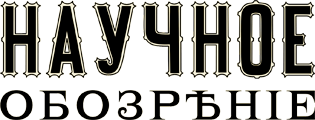Scientific journal
Научное обозрение. Педагогические науки
ISSN 2500-3402
ПИ №ФС77-57475
ISSN 2500-3402
ПИ №ФС77-57475
THE STRUCTURE OF CONTENT AND SOLUTION OF A CREATIVE GRAPHIC TASK
Turkina L.V. 1
1 Branch of the State educational university of higher education «Ural State University of Railway Transport»
Graphic training of technical specialists occurs during the execution of graphic works of various kinds including the solution of tasks. Graphic tasks of classical content, the descriptive geometry tasks with materialized objects and creative tasks with the support of the personal experience are the main types of tasks which generate graphical capabilities of the students. Applying the theoretical basis of the structure and content of tasks to the graphic tasks and performing a comparative analysis, highlighting the main components of “task oriented system” and “critical systems” all kinds of graphics tasks. In task-oriented system of graphics tasks we can include the following elements: data, conditions and requirements of the task. The solving system of classical graphics tasks includes introduction, transferring data in graphical form, data visualization, a plan for solving the problem, graphic design solution of the problem, the analysis of the solution. The solving system of experienced-oriented creative task has a number of additional steps such as the materialization of the object, the selection of the plot, formulation of the problem, enabling the creative application of the theory of graphic disciplines in practice. As a result, we can identify the benefits experienced oriented tasks on descriptive geometry as a means of developing the graphic abilities of students of technical specialties


 science-review.ru
science-review.ru